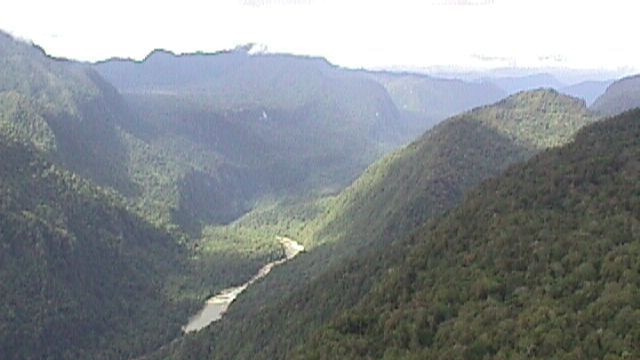Forrest eyes PNG hydro power play
Andrew Forrest and FMG are considering a plan to revive a $5bn hydro power scheme in Papua New Guinea.

Mining billionaire Andrew Forrest and Fortescue Metals Group are considering a plan to revive a $5bn hydro power scheme in Papua New Guinea that could supply power to both the developing nation and the Australian grid.
Dr Forrest is touring PNG with a group of Fortescue executives, and is said to be considering a range of investment opportunities, including a revival of the Purari River Hydro electricity scheme in the south of the country.
The project, which could supply baseload power to PNG and northern Australian, has been floating around as a major infrastructure project in PNG since before the country won its independence from Australia in 1975.
The idea was last seriously considered by Origin Energy, but the Australian energy major dropped its grand plans for a $5bn, 2500MW Purari River hydro electric project in 2014 amid uncertainty around whether it would be able to tap into international carbon credits to help make it financially viable.
But PNG recently put Purari Hydro back on its project wishlist to attract international investors, handing it to state-owned holding company Kumul Consolidated Holdings, to reignite talks with the international investment community.
PNG’s Petroleum and Energy Minister, Kerenga Kua, told The Weekend Australian on Friday Dr Forrest had expressed an interest in the project.
“We have three major river systems in which he’s interested and he’s been out looking at them in the last couple of days,” Mr Kua said.
“What the Prime Minister said to us today is that Dr Forrest is not interested in our gas, he’s trying to move into renewable energy and invest ahead of others in green power. That’s what he’s looking at and we as a country would welcome it, as we need foreign direct investment at this time.”
Devising a hydro export scheme may be among options he could consider, Mr Kua said.
“We have long wanted to build some large enough hydro electric scheme that can export power to Australia, our closest major market,” he said. “The potential has been there for years and with the technology now, it can be done.”
Origin signed a memorandum of co-operation with the PNG and Queensland governments in 2010 over feasibility work on a hydro power plant on PNG’s Purari River, in the country’s south. In addition to supplying power to PNG households and industry, the plan considered building a 250km subsea interconnector — similar to Basslink, which connects Tasmania and Victoria — under Torres Strait to Cape York.
From there another 1000km of transmission lines would be needed to link the plant to through Weipa and down to Townsville, to connect the project to the national electricity grid.
Dr Forrest is said to be spending about a week in PNG and looking at possible investment opportunities, including an involvement in other long-stalled projects such as the Pacific Marine Industrial Zone in Madang.
It is understood the PNG government may also have pitched the Fortescue chairman a role in operating the Porgera gold mine, which it recently stripped from Barrick and China’s Zijin Mining. Porgera was also put under the wing of Kumul Consolidated Holdings to seek new partners within the last week. A spokesman for Fortescue would not comment on the trip of its chairman and executives to PNG.
“Fortescue has an active business development program and we do not comment on speculation regarding specific assets or opportunities,” he said.
He said Dr Forrest “regularly engages with global leaders on important philanthropic initiatives”.
With cash rolling in at record rates from its Pilbara iron ore mines, Fortescue has been spreading its wings across the globe in search of new business opportunities over the past year.
On Monday, Fortescue revealed record annual earnings before interest, tax, depreciation and amortisation of $US8.3bn ($11.3bn) on record revenue of $US12.82bn, as the company shipped 178.2 million tonnes of ore from the Pilbara and realised an average earnings margin of $US52 a tonne. It declared a final dividend of $1 a share, taking its total shareholder payout in the 2020 financial year to $1.73 a share. For Dr Forrest, who owns about 36 per cent of the miner, it means a payout of about $1.16bn.
Last year, Fortescue unsuccessfully pitched a bid for the right to develop half of the giant Simandou iron ore deposit in Guinea, and held talks with Liberian officials about access to their nation’s resources sector.
This week a spokesman for Afghanistan’s Ministry of Mines and Petroleum confirmed Dr Forrest was planning to visit the country in October, to follow up August talks with President Ashraf Ghani over potential investment in iron ore and copper deposits in the war-torn nation.
Additional reporting: Ben Packham

To join the conversation, please log in. Don't have an account? Register
Join the conversation, you are commenting as Logout